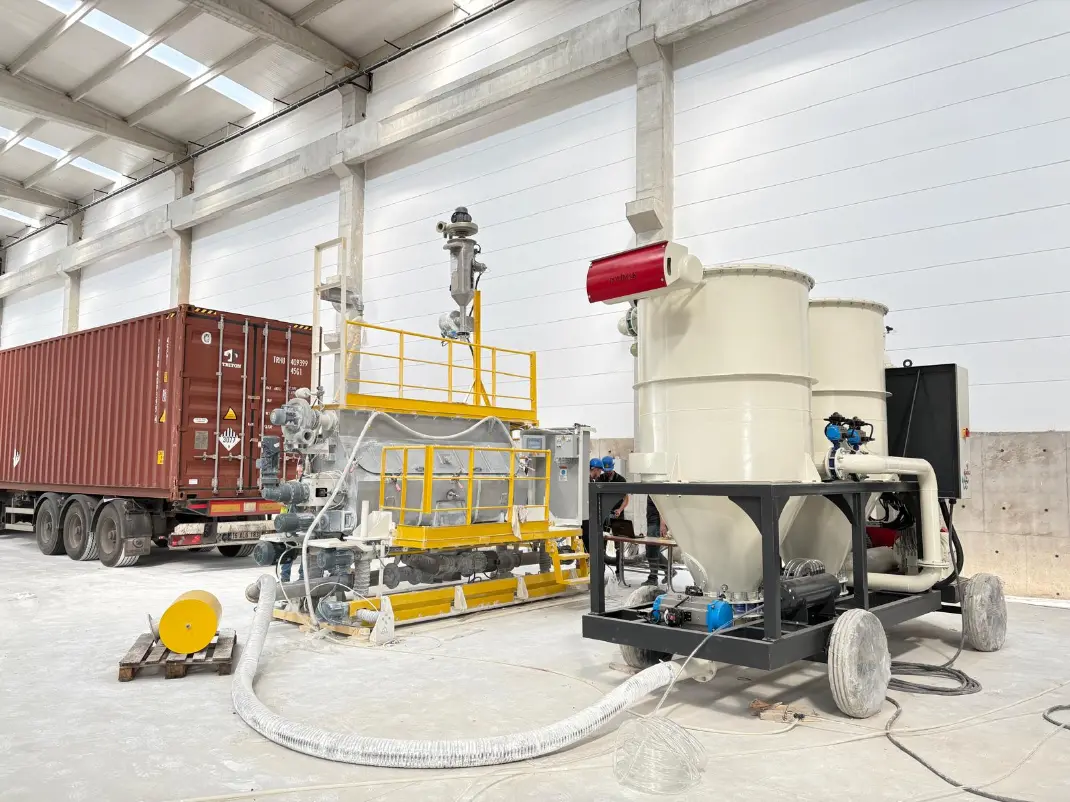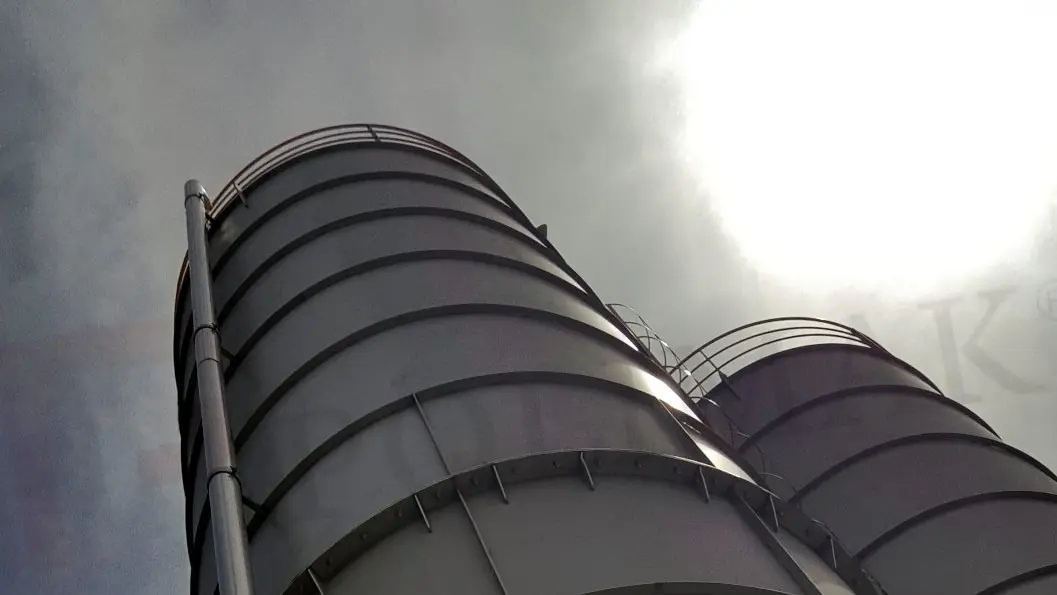Container Unloading Systems
Container unloading systems play a critical role in port and terminal operations, enabling quick, safe, and dust-free extraction of bulk and palletized cargo from containers. This process is essential for ensuring smooth intermodal transfers and minimizing turnaround times for ships, trucks, and trains.
Particularly in handling high-volume bulk materials, such as grains, minerals, or powdered chemicals, unloading systems are designed to maintain product integrity while protecting workers and the environment from dust and spillage.

How the System Operates
• Container Positioning: Containers are precisely positioned on unloading platforms or chassis, often using automated guided vehicles (AGVs) or cranes to align with the unloading system.
• Securing the Container: Containers are securely fastened to prevent movement during unloading. Doors or hatches are opened using mechanical or automated systems to allow access.
• Bulk Material Extraction: Depending on the cargo type, bulk materials are unloaded via loading chutes, pneumatic or mechanical conveyors. For palletized goods, forklifts or robotic arms handle unloading.
• Dust Control and Containment: To maintain a dust-free environment, unloading zones are equipped with enclosed systems equipped with air filtration, and dust collectors that prevent airborne particles from escaping.
• Material Transfer: Handled materials are conveyed directly to storage silos, stockpiles, or onward transport vehicles like trucks or trains, minimizing intermediate handling and contamination risks.

Key Components
• Container Unloading Station: Heavy-duty platform or dock designed to accommodate containers and provide access for unloading equipment.
• Pneumatic or Mechanical Conveyors: Vacuum suction units, screw conveyors, or belt conveyors move bulk material efficiently from container to storage or transport units.
• Dust Extraction Systems: High-efficiency bag filters and cyclones remove dust at the point of extraction, maintaining clean air quality.
• Container Door Handling Equipment: Automated door openers or hydraulic arms for safe and ergonomic opening of heavy container doors.
• Safety and Control Systems: Sensors and control panels monitor unloading parameters such as flow rates, container stability, and dust levels to ensure safe operation.

Key Advantages and Benefits
• Reduced Unloading Time: Automated and semi-automated systems speed up the unloading process, increasing terminal throughput.
• Protection of Product Quality: Closed and dust-controlled unloading mechanism prevents contamination, moisture, and material degradation.
• Environmental Compliance: Dust suppression systems meet strict environmental regulations and reduce health risks to workers and environment.
• Flexibility Across Cargo Types: Designed to handle a variety of bulk goods including powders, granules, flakes, and palletized products.
• Seamless Intermodal Transfer: Integration with storage and transport systems ensures smooth material flow between ship, rail, and road.

Industry-Specific Examples
• Grain Terminals: Containers loaded with wheat or corn are efficiently unloaded using enclosed pneumatic conveying systems. These systems transfer grain directly into silos, keeping dryness and minimizing product loss. The enclosed setup also helps reduce spillage and environmental exposure.
• Chemical Ports: Powdered chemicals such as fertilizers or pigments are safely unloaded into sealed screw conveyors. Integrated dust filtration systems protect workers from airborne particles. This setup ensures both environmental safety and operational cleanliness.
• Mineral Export Facilities: Bulk minerals like gypsum or salt are discharged through loading chutes equipped with vibration assistance. This prevents bridging and ensures continuous material flow. Once extracted, the materials are conveyed to stockpiles or loaded onto rail wagons.
• Construction Material Handling: Containers carrying cement or fly ash are emptied using high-capacity augers. These systems feature built-in dust collection units to maintain a clean and safe unloading environment. The materials are then immediately prepared for transport to construction sites.